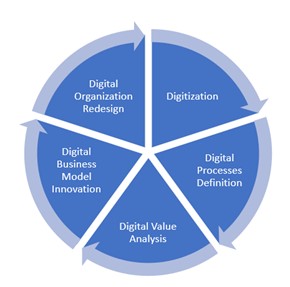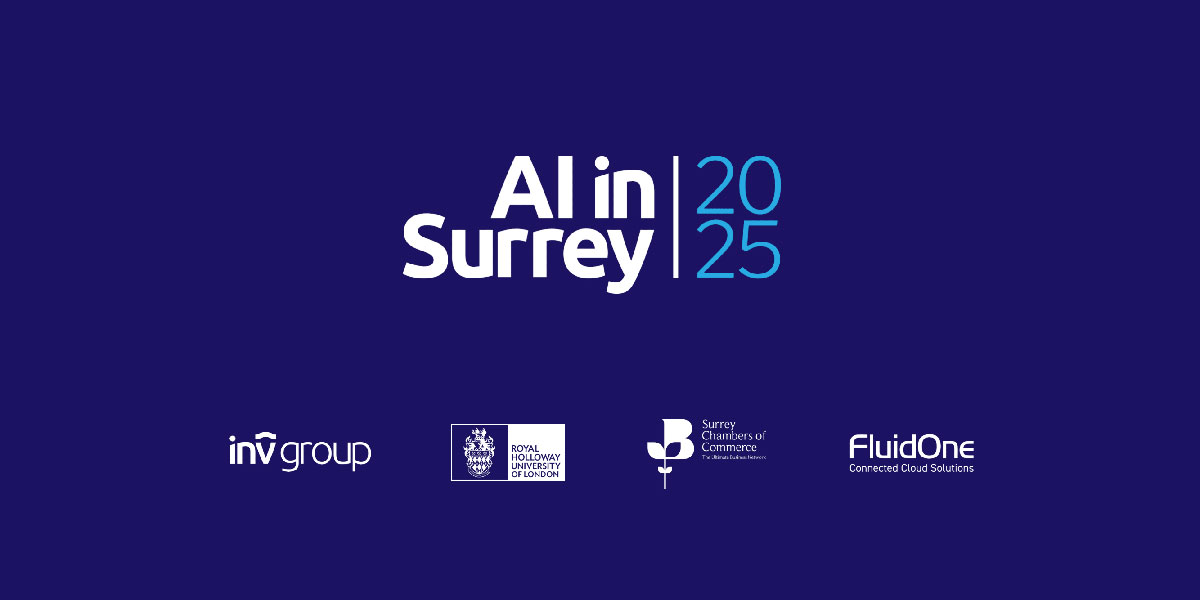In the UK we love our pets. And in these troubled times, even more people have turned to them with a reported 3.2 million new pet owners since the start of lockdown. Consumer spending on pets in the UK was over £7.8 Billion in 2020. No surprise, then, that digital devices for monitoring and managing pets, especially dogs, are also becoming more widespread.
Of course, digital transformation in the health industry is a hot topic. However, the vast majority of the conversations and analysis concern human health. What about animal health? How can the impact of digital technologies in organizations involved in animal health and welfare best be understood?
Organizations undergo digital transformation when they focus greater attention on the scope and impact of digital technologies to gain new insights and evolve their way of working. As a result, while business activities are increasingly centered on digital assets, their processes are redesigned to take advantage of their particular characteristics. While sectors such as entertainment and online retail were among the first to embrace these changes, the effects of this more coordinated approach to digital transformation are being felt across all industries and sectors including animal health.
When considering digital transformation in such domains, I have found it useful to consider the primary target and emphasis of digital transformation in five key areas.

This framework defines five focus areas to understand the impact of digital technologies and to establish an understanding of an organization’s digital transformation footprint. Most organizations with a history of digital technology adoption have on-going activities that address one or more of these areas. Frequently, the organization’s digital technology adoption journey is depicted as proceeding in a linear fashion by applying increasing resources and energy from digitization through to digital organization redesign. However, more typically a much more complex profile of activities is usually being carried out across all five elements. Here, we outline the five elements and their relationships.
Digitization. Converting data, transactions, and business artifacts into digital formats. In almost all cases, physical artifacts can be replaced or be represented by their digital equivalents to increase access, enhance quality, enable sharing, and improve processing capacity for those artifacts. Doing this raises new business challenges and opportunities in existing markets and creates new digitally focused solutions.
Digital Process Definition. Deploying digital technologies and processes to support key business activities. Access to digital artifacts and deployment of digital tools and mechanisms has allowed organizations to redesign established control and operational management capabilities in areas such as human resource management, marketing, point of sales, help desks, and supply chain management.
Digital Value Analysis. Using digital technologies to generate new sources of value based on products and materials created, information captured and analyzed, and behaviors and actions monitored. Increasingly, digital technology is used to ensure greater intelligence is applied not only to creating products and services, but also to gain new insights into their production, distribution, and use.
Digital Business Model Innovation. Restructuring and redefining existing markets and environments to encourage new digital business opportunities. Examples from many business sectors demonstrate that when digital products and services replace existing physical goods, or when the physical goods generate a real-time digital footprint, the nature of those markets is open to severe disruption by new providers with radically different business models.
Digital Organizational Redesign. Reorganizing strategy to be better suited to digital technologies and business models, requiring changes to management structures to support the new strategy. Many companies competing in digitally disrupted markets are re-examining how they should organize their work, supplier networks, governance bodies, and other fundamental structures.
Is Your Dog Happy?
To illustrate this approach, consider the recent digital transformation experiences in the area of animal health and welfare and some of the activities taking place at the world’s largest animal pharmaceutical company, Zoetis.
There is a long history of application of digital technologies in health domains. Initially in areas such as patient record storage, supplies management, and billing, digital technologies are now having impact in many areas from diagnosis to post-treatment monitoring. In animal health, digital technologies are enabling veterinarians to apply pharmaceutical products more effectively to fight disease and improve the lives of animals. In companion animal areas, for example, dog owners spend on average over $1,000 a year on their pet and at least a third of that on maintaining the animal’s health. As a result, digital disruption can bring particularly interesting opportunities to the market for companion animals.
Such prospects have spurred Zoetis, the world’s largest animal pharmaceuticals company, to create a Center for Digital Innovation and invest in research through the vHive Initiative with the goal of introducing new products that use digital technologies to enhance animals’ lives. Consider, for instance, one of their many digital projects aimed at collecting data about a dog’s health.
Digitization: Along with other companies, Zoetis has been experimenting with small wearable devices attached to a dog’s collar to collect data about the animal’s movement, activity, and behavioral patterns. The first step was to consider what kinds of digitized data the device could generate, the fidelity and accuracy of the generated data, and how this digital information can be analyzed to understand potential health conditions. This information is assimilated into an online dashboard that pet owners can access through a mobile app to monitor their animal’s nutritional intake, exercise, and socialization patterns.
Digital Process Definition: The use of this data allows pet owners, veterinarians and Zoetis-supplied pharmacists to review their activities as they look for efficiencies in maintaining an animal’s health. For example, continuous availability of the animal’s exercise and sleeping patterns could be used as primary input to diagnose illnesses, understand the efficacy of prescribed drugs, and reassure pet owners during treatments. This offers opportunities to change core processes for patient monitoring, drug prescription, and product evaluation.
Digital Value Analysis: The broad adoption of digital technologies highlights a new set of digital health concepts and principles to all stakeholders in the animal health value chain. Consider the role of the veterinarian in a digital world, for instance. Devices offering continual real-time monitoring of a dog’s health allow the veterinary clinic to understand their patients’ health, reduce uncertainties in diagnosis, evaluate the effectiveness of their diagnosis, and compare their practices to others based on outcomes received by their patients. This knowledge allows a deeper view of value creation across many aspects of the treatment of animals and supports new business opportunities in digitally managed animal wellness.
Digital Business Model Innovation: A new set of principles makes significantly altered business model innovations possible. For example, the data generated from these wearable devices for dogs allow illness prevention and wellness-focused approaches to be considered. A variety of pricing strategies can then be examined based on a deeper understanding of an animal’s continued health and treatment outcomes. For example, a core level of service can be defined at low cost with penalties introduced when animal owners or veterinary practices fall below performance norms. Practices willing to introduce such business models can significantly disrupt current approaches and differentiate themselves from the competition based on new evidence-based value models for their patients.
Digital Organizational Redesign: These digitally enabled ways of working signify a new relationship between drug supplier, veterinary practice, and pet owner that may require restructuring of the veterinary practice based on maintaining wellness of animals rather than focusing on fixing them when they are sick. For example, veterinary practices’ activities may need to be more fundamentally re-organized around wellness. More broadly, however, the animal health industry may be affected across the whole supply chain. Consider, for example, the role of education establishments such as veterinary schools and the kinds of skills they need to impart to students. Veterinarians in a digital world may not only require basic training in digital technologies; they may also need to act as technology entrepreneurs in an increasingly sophisticated digital ecosystem. This could have enormous structural and organizational repercussions for all actors in the animal health supply chain.
Summary
Digital transformation is changing every industry. It is not just digitizing existing ways of working, but also redefining the business models, organizational structures, and practices in place. In understanding and managing health, the use of digital technologies is starting to experience widespread deployment. After much discussion, perhaps we are about to see the reality of whether digital transformation reality lives up to the hype in the animal health industry!





